Tuesday, February 22: The whole time I was in Korea, my good intention was to do a temple stay. However, one thing or another kept waylaying my plans, so it wasn’t until the Tuesday and Wednesday right before I left the country that I was finally able to go. And though I had seen many lovely and enticing temples while I was in Korea, I didn’t have time to do anything but go to the one closest to Daegu, Golgulsa, also known as the Stone Buddha Temple. This temple is located 20 km east of Gyeongju, a city about an hour east of Daegu. I took a 40 minute bus from Gyeongju (the 150 bus) and then a 15 minute walk from the bus stop to the temple.
Korea’s Templestay program is quite extensive and provides visitors with a chance to visit a traditional Korean temple which “preserves the original flavor of Buddhist culture” in the country, and to give people a chance to experience the daily life of the practitioners there. There were many gorgeous temples throughout Korea that I thought, as I visited them, would be perfect and idyllic spots to do temple stays. However, since I waited until the last-minute, I didn’t have the time to travel to one of these scenic temples.
 Sadly, Golgulsa is neither gorgeous nor scenic. As a matter of fact, the bus from Gyeongju dropped me along a road where I had to traipse past two huge industrial plants spewing smoke and toxic particles into the air. I was carrying my bag with lots of layers of warm clothes because I was told the morning meditation hall was not heated. And it was the dead of winter. So I wanted to be prepared.
Sadly, Golgulsa is neither gorgeous nor scenic. As a matter of fact, the bus from Gyeongju dropped me along a road where I had to traipse past two huge industrial plants spewing smoke and toxic particles into the air. I was carrying my bag with lots of layers of warm clothes because I was told the morning meditation hall was not heated. And it was the dead of winter. So I wanted to be prepared.
The one thing I didn’t know until I got there was that Golgulsa is the headquarters of the Sunmudo training center. Sunmudo, or Zen Martial Art, is a “training method in the form of Buddhism,” and has secretly been handed down through the centuries by Buddhist families. It’s basically martial arts for monks.
According to the pamphlet which is mostly in Korean but has a few choice words in English, “sun is the way to attain an intuitive illumination of mind and spirit through meditation. Mu means martial arts and do means way. Those who practice Sunmudo say one can attain a higher state of mind through both movement of body and spiritual calm.” Another piece of literature provided by the temple says Sunmudo is “designed to extinguish worldly pain and attain enlightenment. The goal of this training is harmonization of mind and body, united with breathing.” Sunmudo is composed of “still training,” which includes sitting meditation, yoga-like exercises, and Gi-gong/Qigong, and “active training,” which includes gymnastics and martial arts. There is usually “still training” in the morning and “active training” in the evening.
Of course, I had no idea what I was getting myself into. Upon arrival, I immediately was told to put my things in my room and join the other temple stay visitors for archery. It was freezing cold outdoors and there was crusty snow all over the ground. Everyone was shooting arrows in the general direction of two large targets across an expanse of white. The monk in charge demonstrated the proper way to hold the bow and arrow so as not to accidentally poke your own eye out or seriously maim someone else. Surprisingly, I grasped the proper way to hold the bow and arrow, took aim, and immediately, on my first try, hit the ring immediately around the bull’s-eye. The monk was shocked, as was I! I managed to hit the outermost rings of the targets a couple more times, but the rest of my arrows ended up stuck all askew out of the snow like the needles of a porcupine suffering a severe case of bed head.
After archery, everyone else did “community work” but the monks asked me, since I just arrived, if I would like to see the Sunmudo demonstration. Always preferring “watching” to “working,” I followed his suggestion and climbed up a steep and icy hill to the uppermost temple. There I watched the monks doing a lot of crazy antics, which must have been the aforementioned “SunMuDo.” It was quite interesting with monks in various types of costumes doing dance-like steps in what looked more like an artistic performance rather than a martial arts demonstration.
After the demonstration, I was left to my own devices with instructions only to come to dinner at 17:30. Before going back to the dormitory, I explored along the top of the mountain, which contains a sculptured MayaTathagata Buddha and twelve rock caves. I was surprised to find multitudes of little old men and ladies clambering along these rock temples and caves, poking into each one. It was slippery and icy, yet these frail old people were negotiating the steep and icy patches without any hesitation. This baffled and astounded me. Meanwhile, I was my normal klutzy self and kept losing my footing on the slippery patches.
I felt really bedraggled after my hike past the industrial plants and the long walk up the steep hill to the temple. Walking back down the hill from the temple was not so easy either, with the road a solid sheet of ice on an almost vertical slope. I slipped several times on the way up so was wary and slow going down. When I finally got down the hill, I decided to “take a rest” in my bare bones room. On the heated floor, I piled layers of Korean style mats and lay down to take a nap.
At dinner I met a Korean woman who was a Christian. She had been at the temple stay for two weeks and was here for the purpose of losing weight. With the all-vegetarian meals and the exercise, she felt like it was a healthy way to spend a vacation. All meals at the temple are vegetarian. As a matter of fact, the rules of this temple say: “Please restrain from bring [sic] any outside food. Alcohol, Meat and smoking is prohibited.” Some of the other monks who have been here for long periods of time say it is impossible to have any energy from the all-vegetarian diet and the martial arts exercises. Thus, the head monk allows the monks to go off the premises to eat meat, but they are not allowed to bring it on the grounds of the temple.
Other rules of the temple are as follows: 1) Please follow the schedule fully and on time. Do not let your personal habits interfere with the program; (2) During free time please do not leave the temple premises. After evening training do not leave the temple, enter others’ rooms or wander around the grounds; and (3) Please do not wear provocative clothing or clothing that shows too much flesh. Wear simple clothes.
It was too cold to wear anything but clothes that covered myself fully, so there was no worry there. Also, when I first arrived at the temple, they gave me a kind of padded monk outfit with a square-shaped yellow quilted vest and a very baggy (and comfortable) pair of gray pants that wrap and tie to fit any size. This was what I wore during my entire temple stay.
After the healthy vegetarian meal, which stuffed me quite nicely, we had orientation at 18:10 and then an evening chanting service that lasted a half-hour. We sat on the cold floor and chanted and meditated in the building adjacent to the archery field. At 19:00, we had an hour of Sunmudo training. This I didn’t care for at all! I came here to relax and meditate and get in touch with my spiritual side. I was envisioning sitting cross-legged and meditating for long periods of time. Instead I had to stretch and kick and hold awkward poses interminably. By the time all was said and done, I was exhausted and aching all over. This was more exercise than I had the entire time I was in Korea!
I went back to my room and got cozy, tucked into my little bed of mats. I read the book I brought along to prepare myself for India, Brick Lane by Monica Ali. On that Tuesday evening, it was only 5 more days until I was to leave Korea for good, heading to India for 3 weeks before returning home to America. The temple required lights out by 22:00, but I was asleep long before that, exhausted from pretending to be a martial-arts monk.
Wednesday, February 23: I set an alarm because I heard that once the monks walked by our rooms at 4 a.m. tapping on their dried gourds, we only had 10 minutes to get up and walk up the steep hill to the morning meditation hall.
It was pitch dark and freezing cold as we slipped up the hill to the temple. The meditation room was in the basement of the temple, which was freezing! I had on my heavy Korean winter coat, a hat and gloves, along with multiple layers underneath, so it wasn’t too miserable. Luckily I came prepared! The morning chanting service went from 4:30 to 5:00, after which time we did a sitting meditation for a while. Then we walked outside, once again negotiating the treacherous icy slope to do our walking meditation. When we finally got to the bottom of the hill, we spent a while walking around in circles in the black and frigid air.
FINALLY, at 5:50, we went to the dining hall where we got to eat Barugongyang, a Buddhist Ceremonial Meal. Afterwards, we sat in a circle and had tea and conversation with the head monk, telling him something about ourselves. Then we did some more sitting meditation and many people did 108 bows. I didn’t do this because of my bad knee, but instead did more of the sitting meditation. Finally, after showers, at 11:00, I climbed back up the hill to the temple, along with the rest of the group of visitors who yesterday did “community work,” to watch another Sunmudo demonstration.
This one was more enjoyable because the sun was out and it was a little warmer. I also got to pose with the monks in a Sunmudo pose!
Here’s a video of a small part of the SunMuDo demonstration I watched.
On the way back down to the dining hall for lunch, I got into a nice conversation with a 17-year-old Korean boy who said that he came here to have some solitude and quiet. He said he was tired of overcrowded Korea and he loved being out in nature. He had actually been at the temple for a couple of days but planned to stay several weeks. He said he doesn’t like the schedule at this temple, especially the Sunmudo training. He just wanted to have a quiet time far from the madding crowds.
I second his emotion….
After lunch, I packed up my duffel bag, and walked again down the road past the industrial plants and waited quite some time for the bus going back to Gyeongju. I only wish I had done my temple stay earlier, so I could have chosen a nicer temple without the Sunmudo training. Another time, maybe, in another country. Possibly Japan?


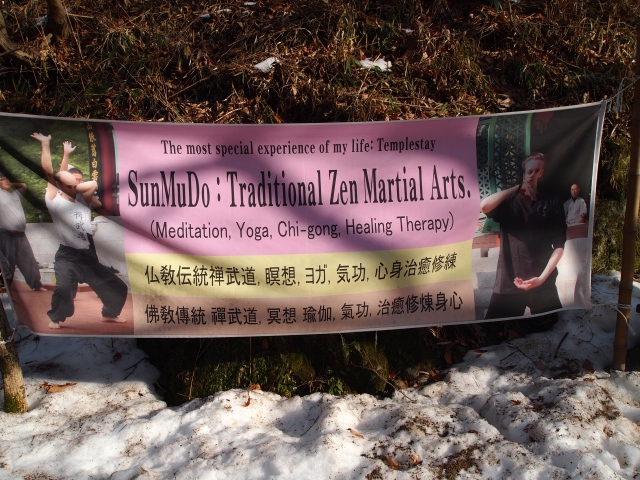


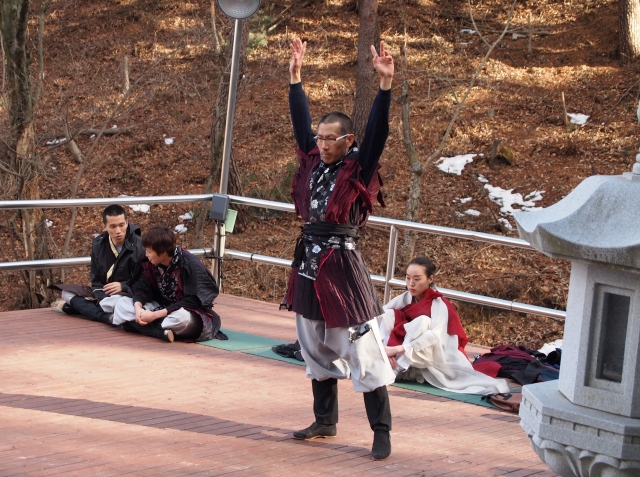


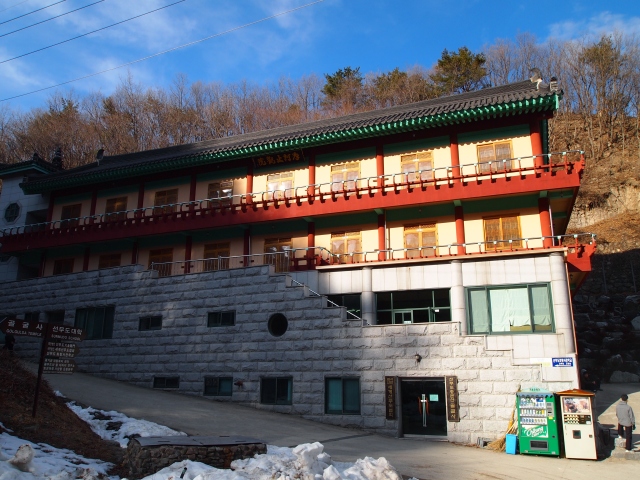








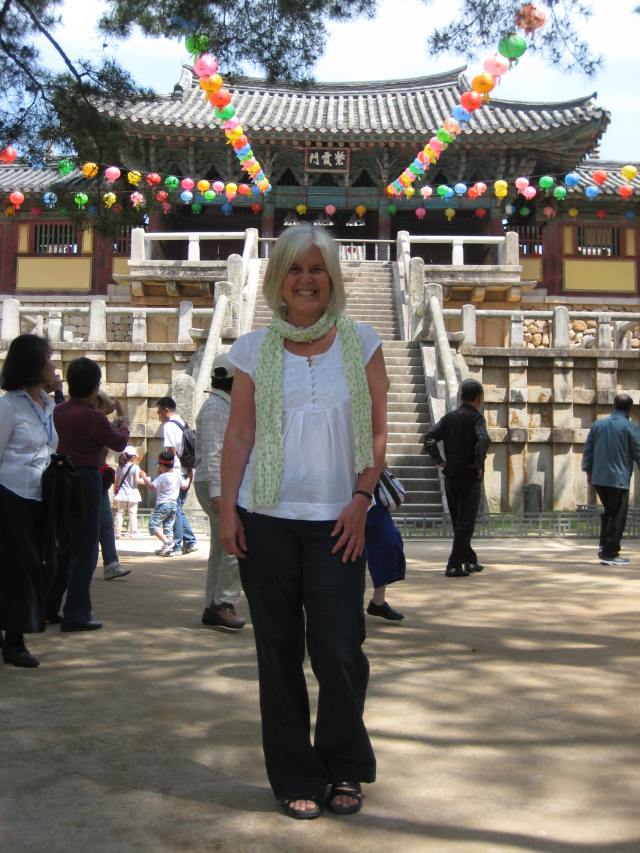
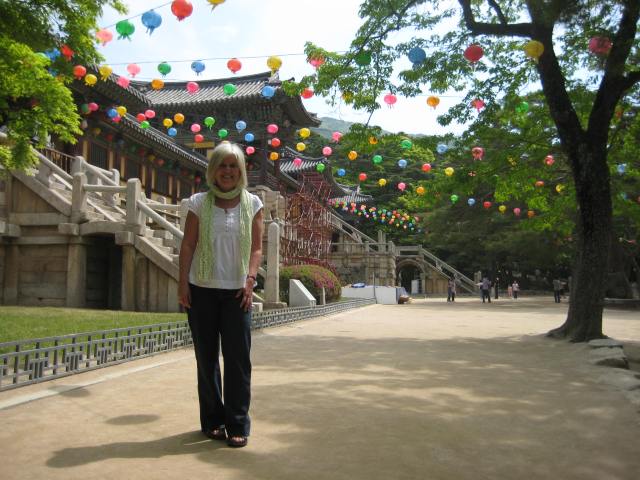

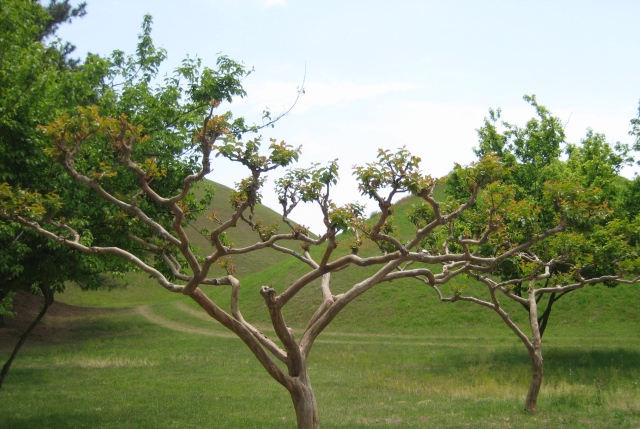



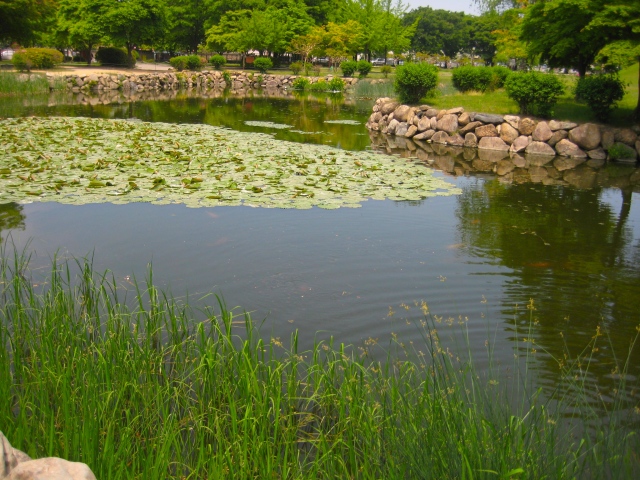

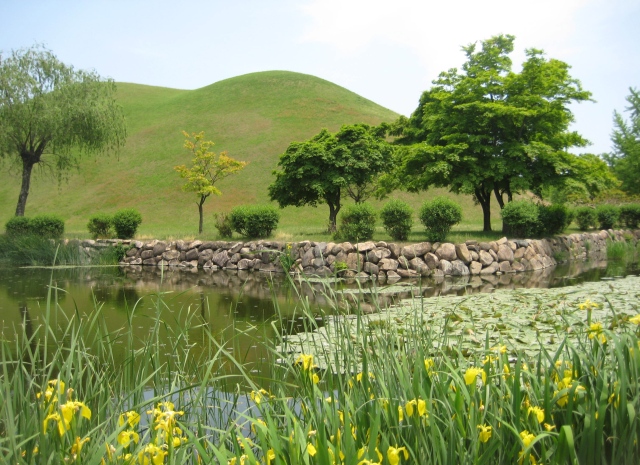

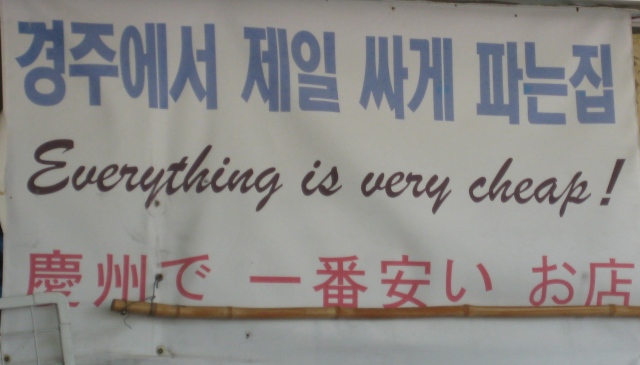

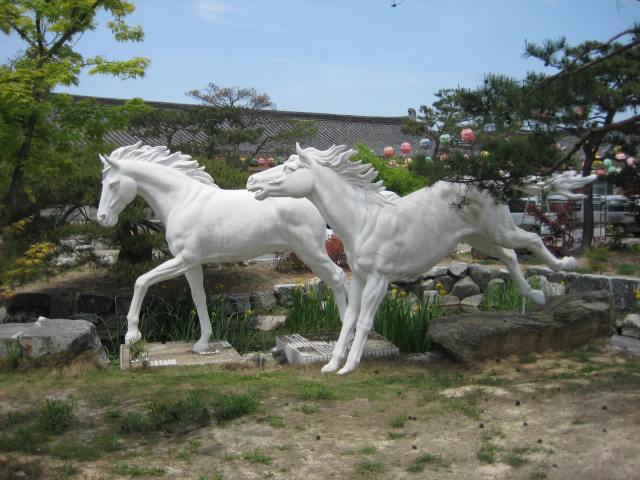
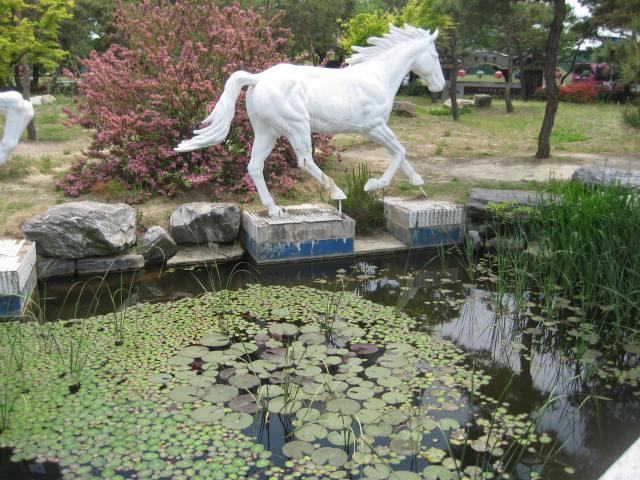


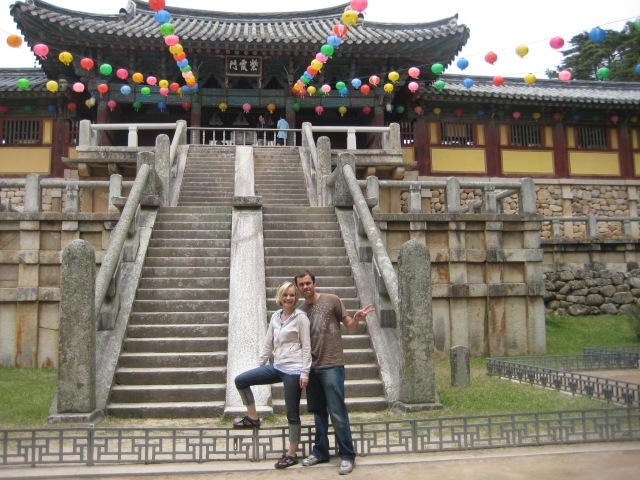



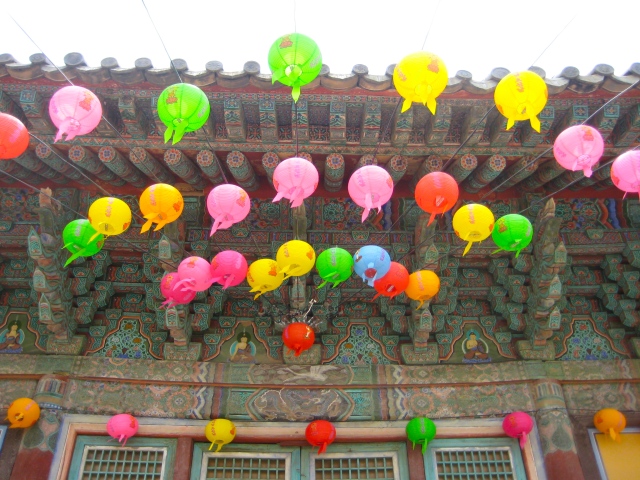
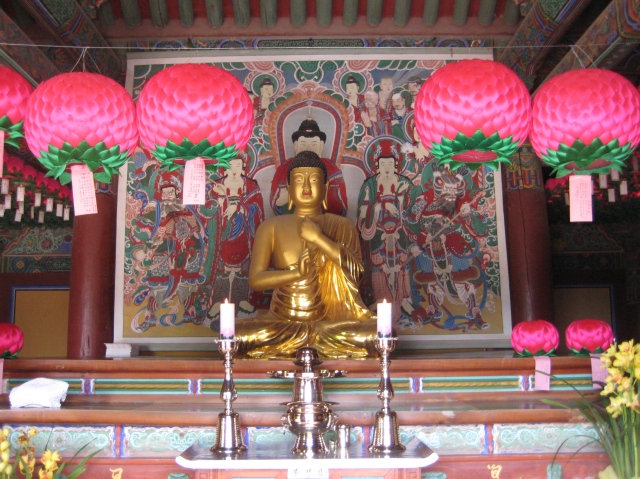

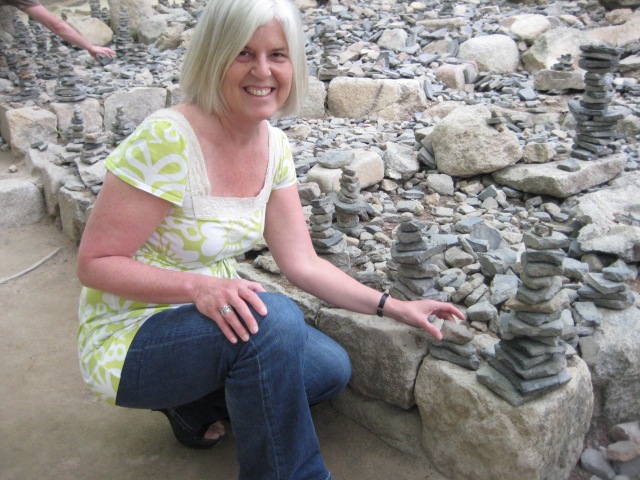
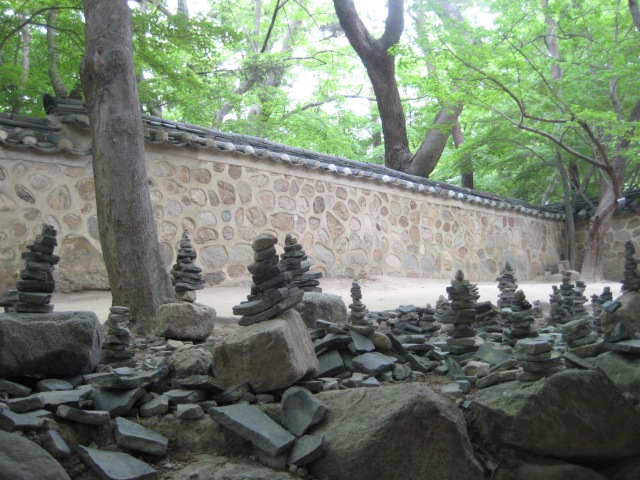

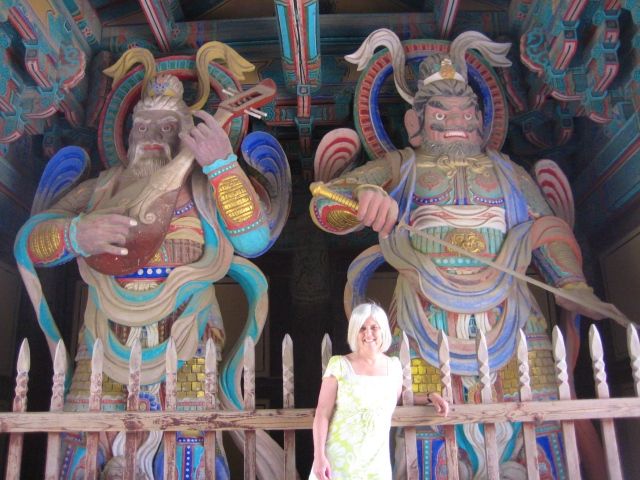
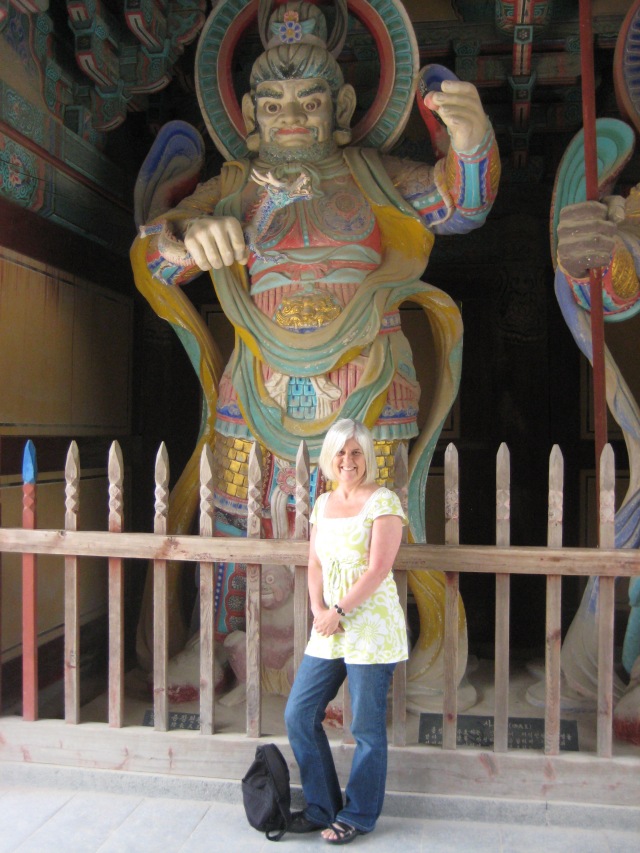
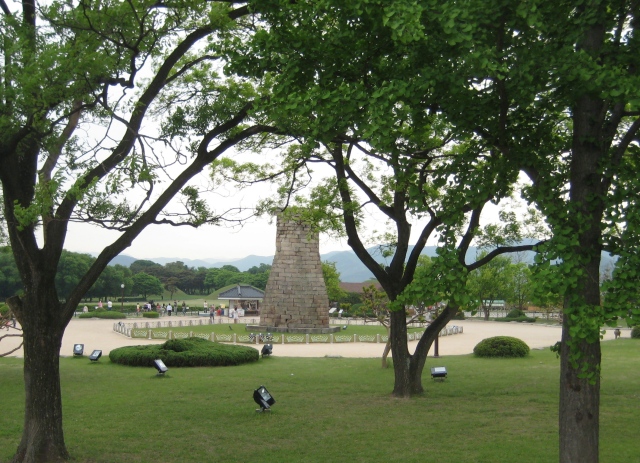

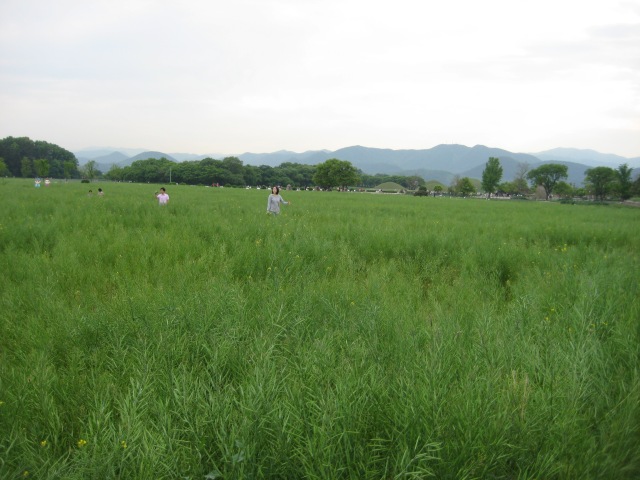


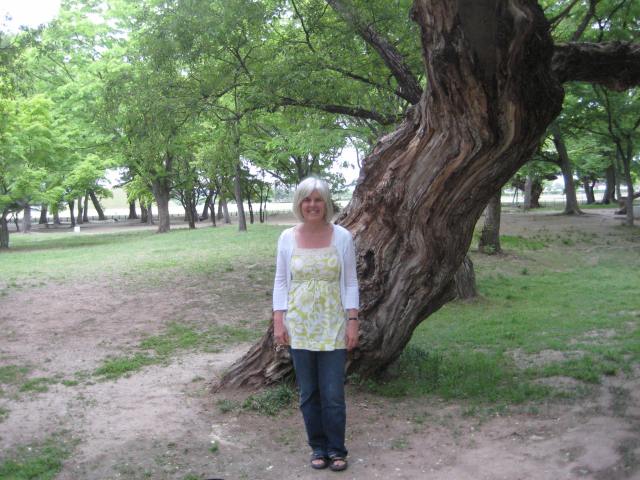

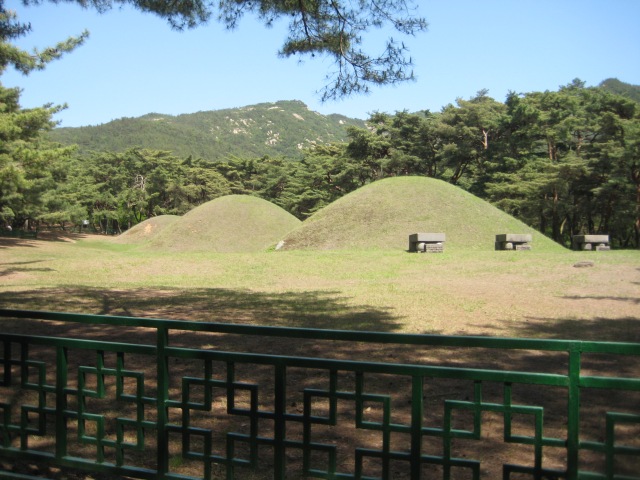


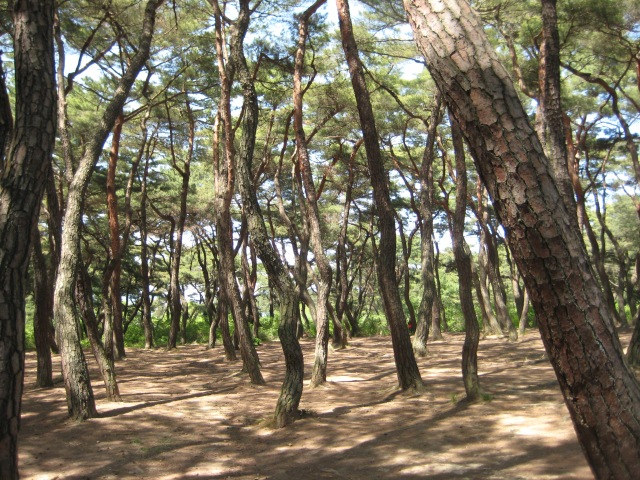




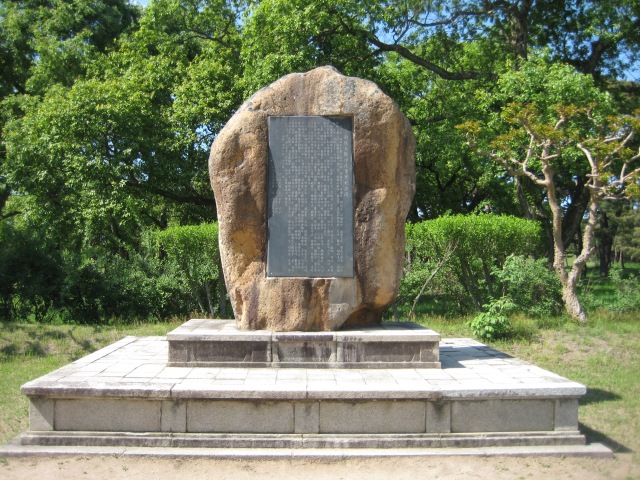




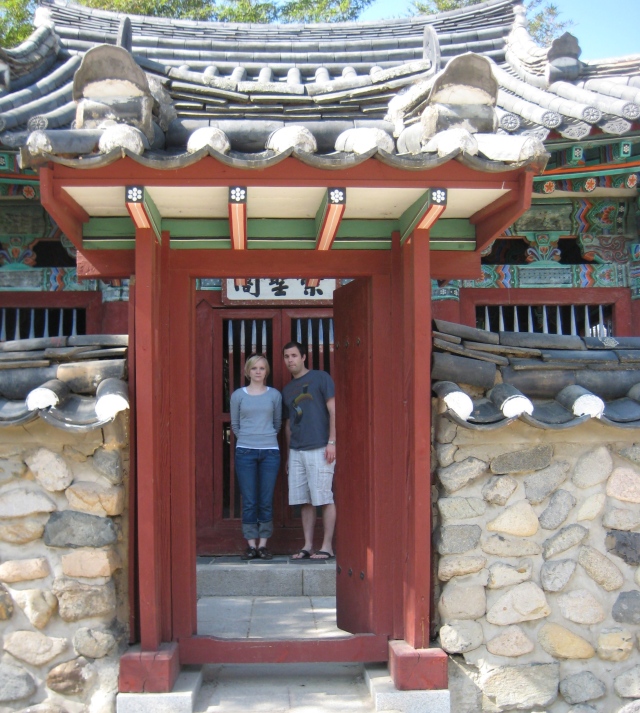
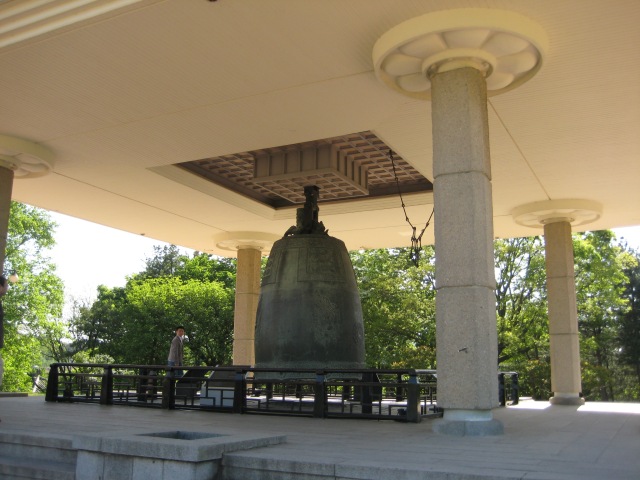
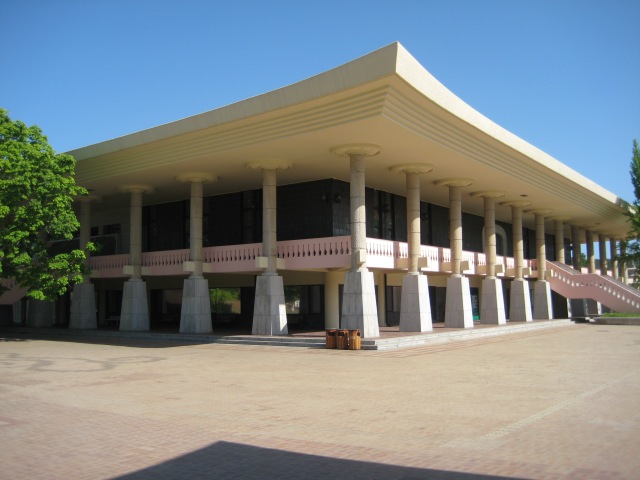



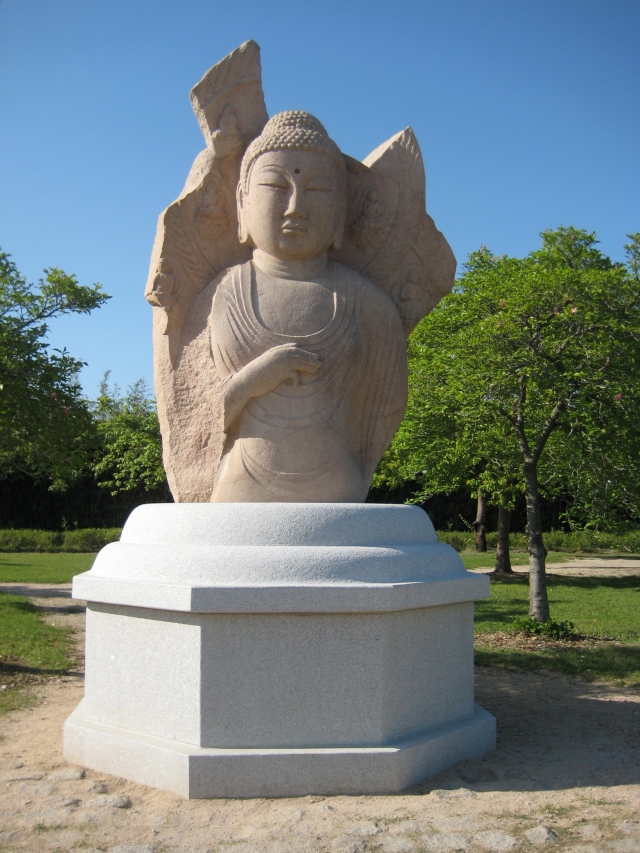
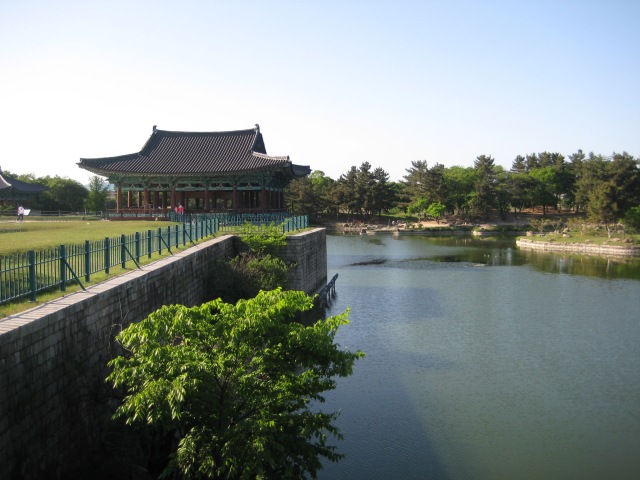
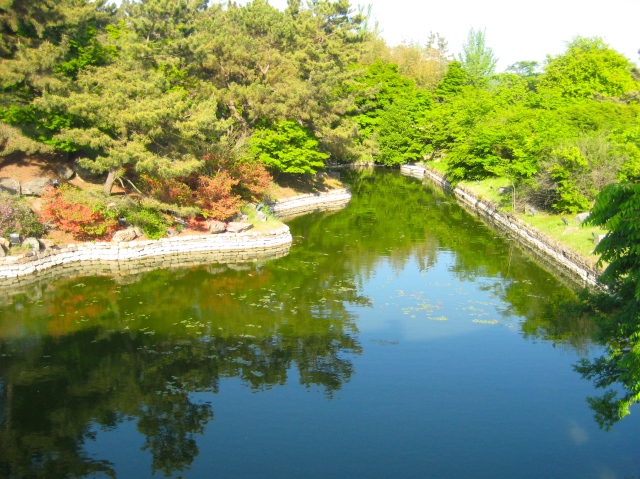


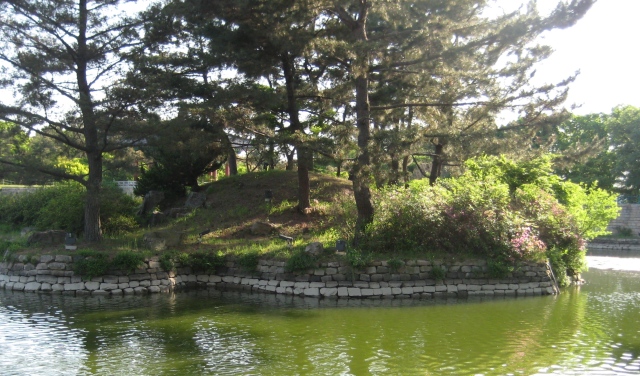



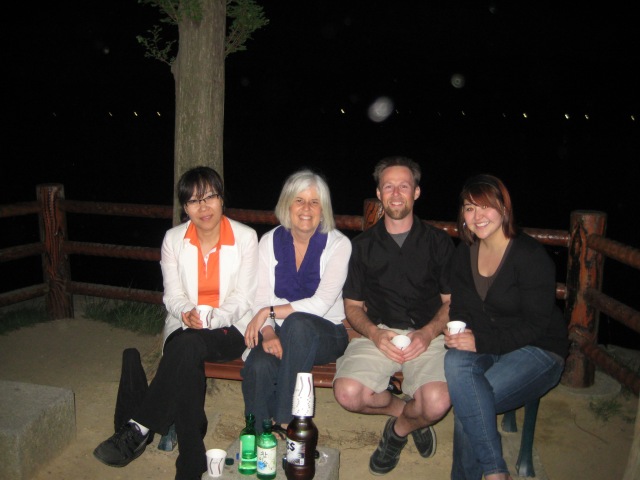

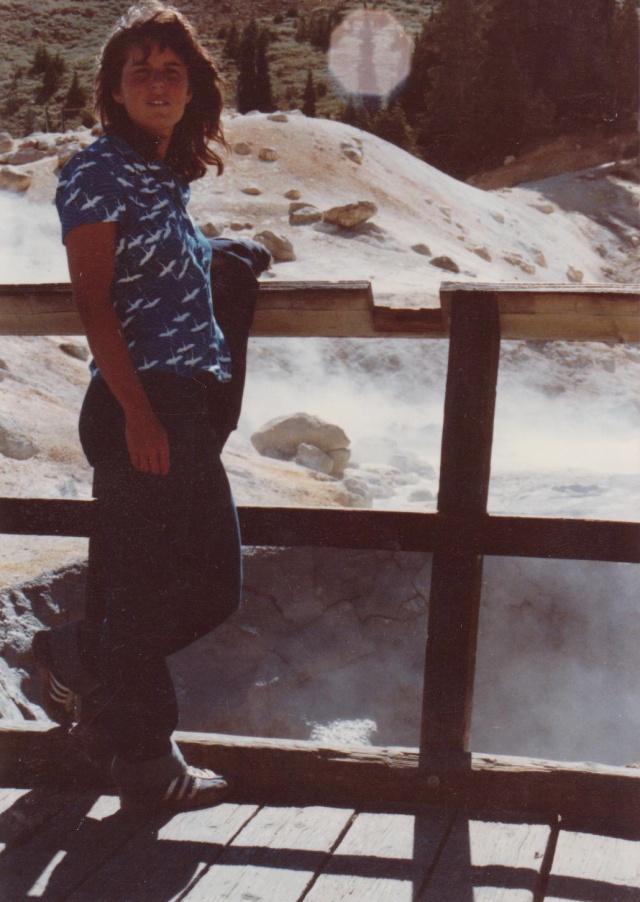


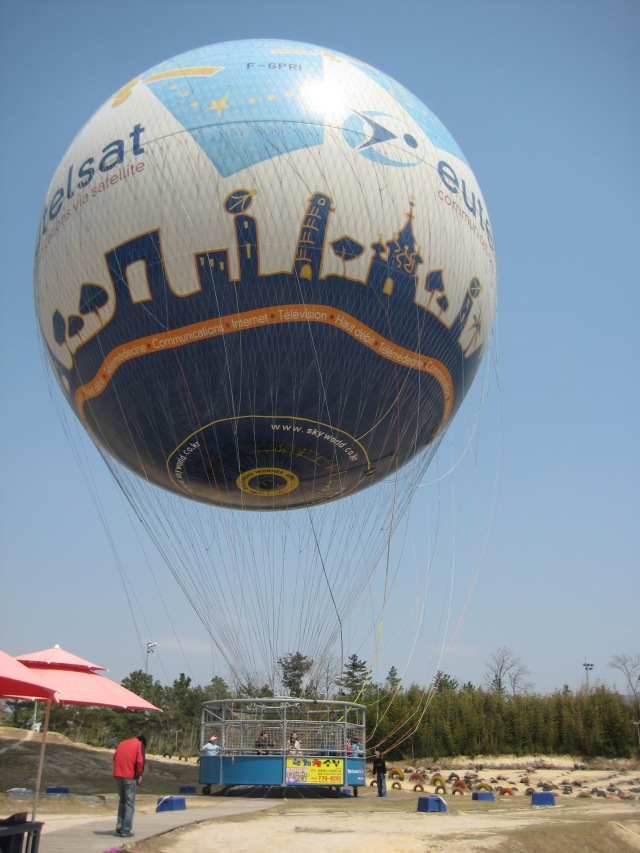
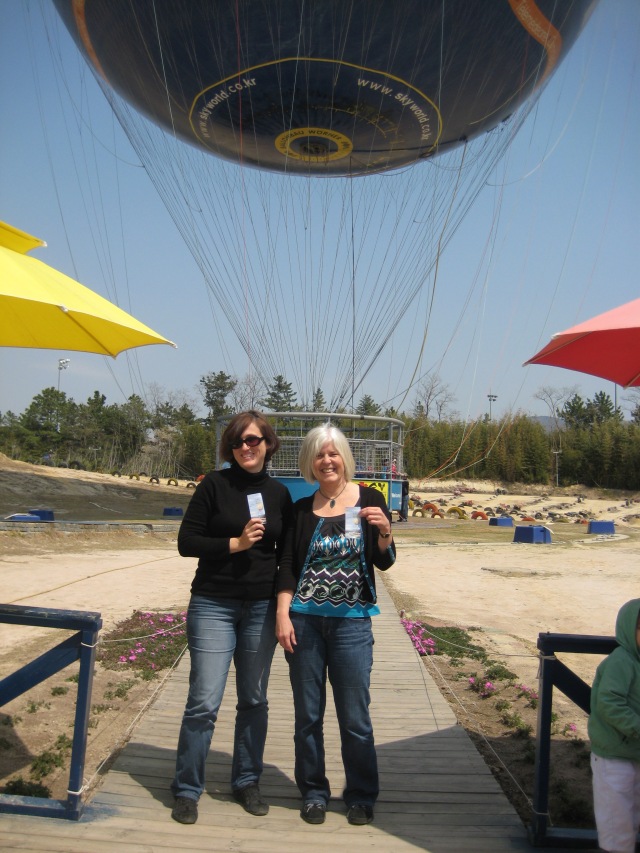

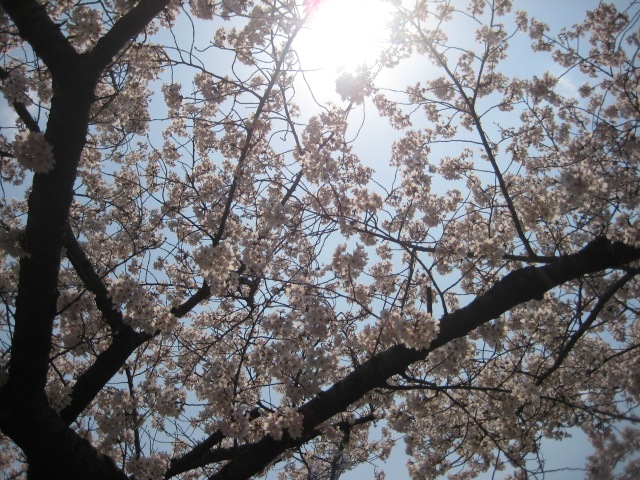

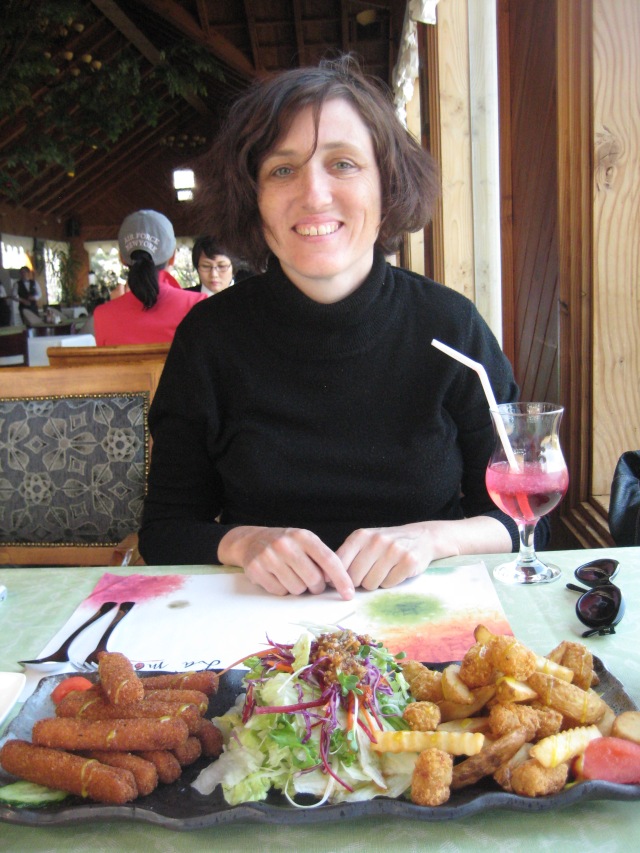

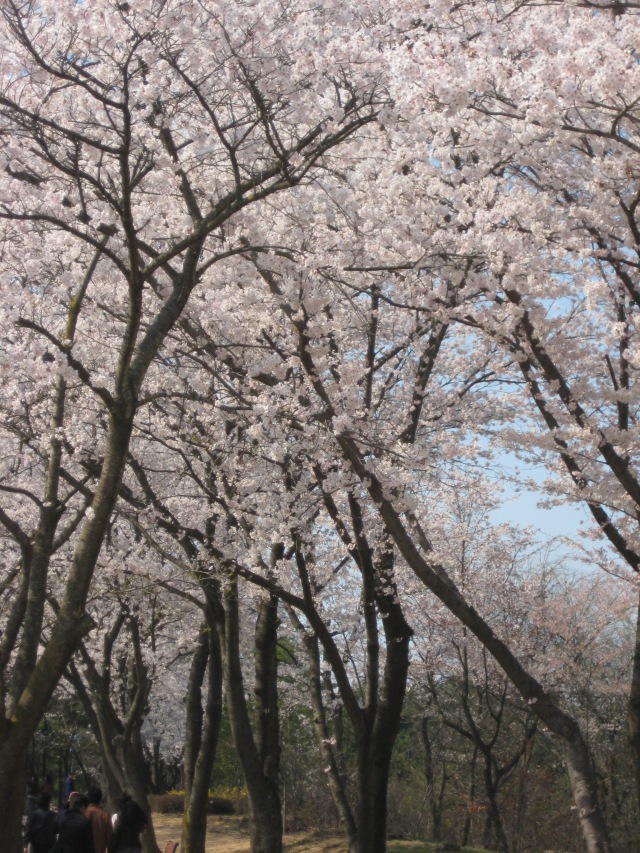


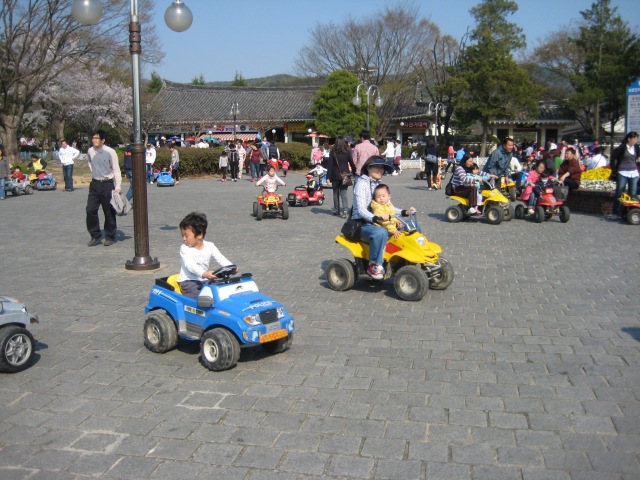

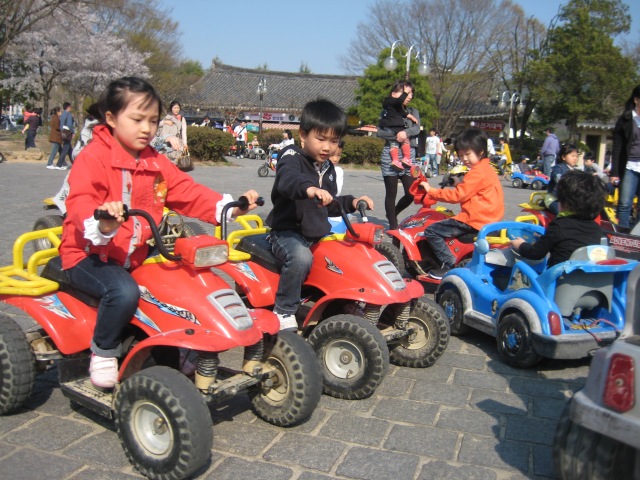

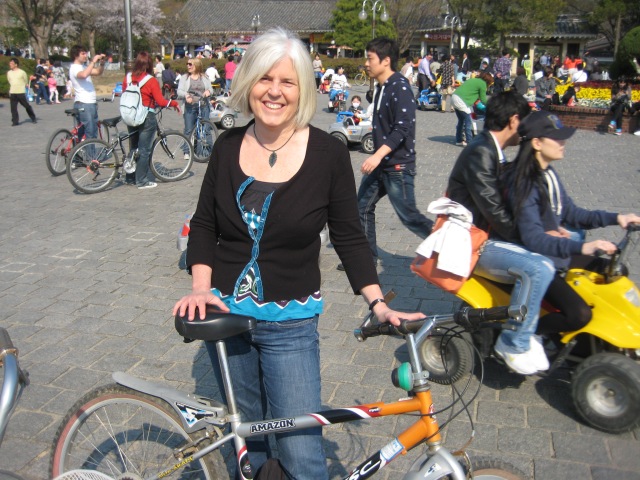



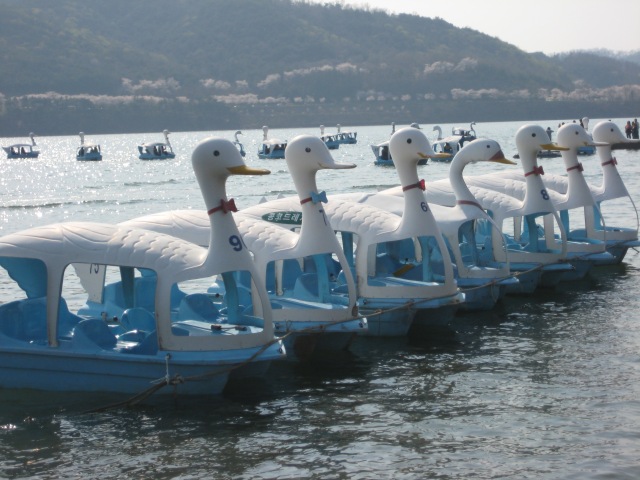


You must be logged in to post a comment.